East Gippsland Phoenix Trail puts artists back on map after bushfires
East Gippsland artists are putting their best works forward after the horrific bushfires of 2019-20.
During the bushfires in Victoria two summers ago, Daniel Jenkins instinctively knew what he needed to protect. “Hammers first, then the dogs,” he says, showing me one of numerous tools he had made by hand. From petite to hefty, with wooden handles smoothed by years of use, they are essential for creating his hand-beaten copper sculptures. As the flames approached, Jenkins buried them outside his studio-workshop.
Part of a fire complex that devastated 320,000ha of East Gippsland over three months, that blaze bypassed his bushland property about 300km east of Melbourne. It’s green and peaceful today but, noting the trees growing just metres from the studio’s windows, I figure the hammers would be the only things left had nature taken a different course.
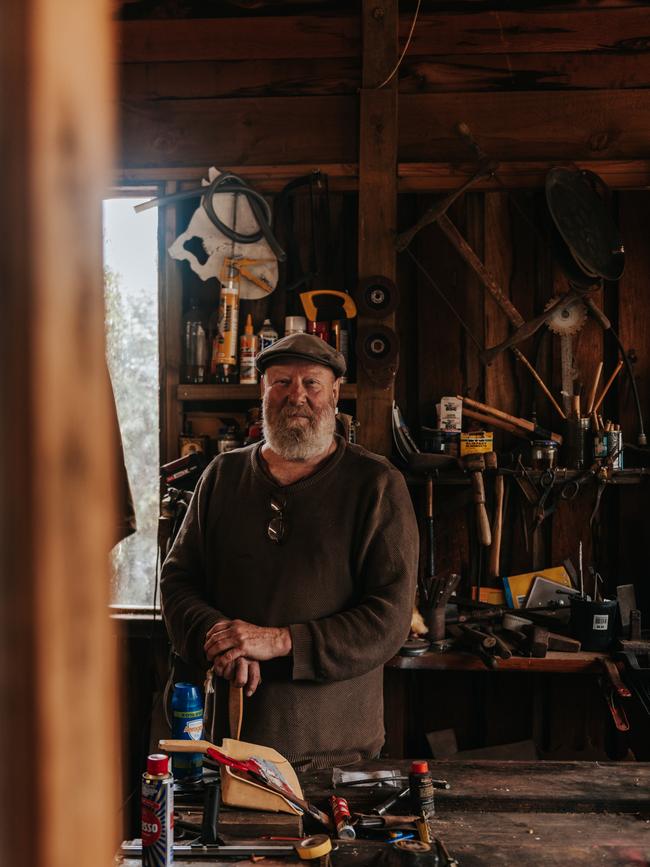
Watched by three big, gentle dogs, Jenkins shows me around the studio. Among the pliers, blowtorches and other tools is a bird sculpture, back for repairs after nature wasn’t so kind. Its pale-green patina and whimsically curly wings, tail and crest are Jenkins’s signatures. Look up on the corner of Swanston and Bourke streets in Melbourne and you’ll see a group of his similarly fantastical creatures.
Jenkins shares the studio with Kate Shone, an artist who also beats copper into submission, conjuring delicate details that defy metal’s solidity. Together they built a little gallery extension during one of Victoria’s pandemic lockdowns, which followed in the bushfires’ wake and torpedoed the launch of an art route on which they feature.
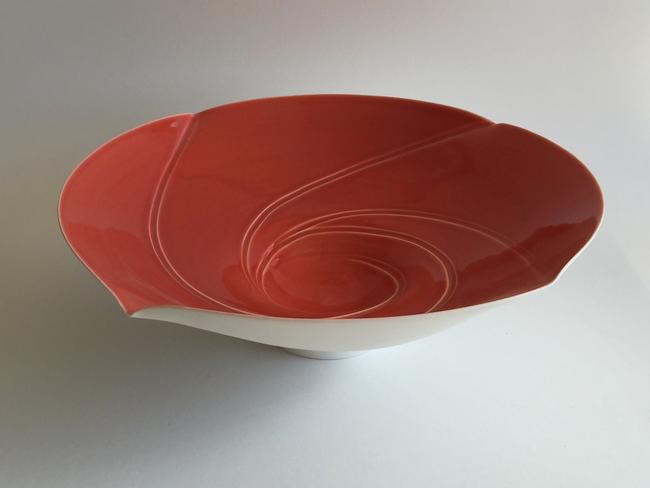
The Phoenix Trail was created immediately after the fires to celebrate and support East Gippsland artists. There are 28 stops, from coastal Lakes Entrance, north to Omeo in the Australian Alps, and to Victoria’s far east in Mallacoota. Most are artists’ studios, but a handful are galleries, including that of the Gunaikurnai Aboriginal Corporation. Alongside a cafe showcasing native ingredients, the gallery presents diverse works by Gunaikurnai artists, and other Indigenous artists living on Gunaikurnai country.
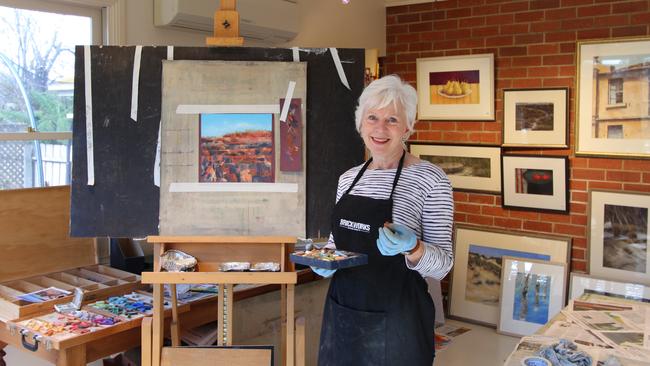
Among the Phoenix Trail creatives opening their work spaces to visitors is Ingrid Smith Rijneveld, whose serene landscape paintings and pastels focus on Gippsland. Up the road is internationally renowned ceramicist Victor Greenaway, whose hand-thrown bowls and vases are for art collectors rather than practical use. “They’re not nut bowls,” says Greenaway with a twinkle in his eye as he shows me one of his graceful, understated porcelain creations.
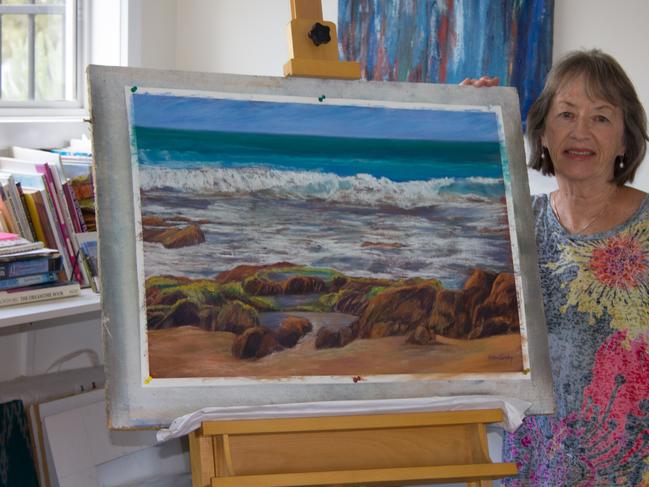
Helen Crossley evacuated her home three times during the fires. Producing paintings and “eco-prints” made with native flora, she’s inspired by nature and felt compelled to draw the region’s blackened landscape. The resulting series of images is eerily beautiful. There’s another kind of beauty in her husband Peter Crossley’s adjacent studio, not officially on the art trail. He handcrafts guitars from Australian hardwoods, adding exquisite inlays of semi-precious stone and mother of pearl. In June, floods compounded East Gippsland’s woes. Rain has persisted, so the region is decidedly green and waterbirds are flocking to the Gippsland Lakes. A Lakes Entrance Helicopters scenic flight over Australia’s largest network of inland waterways reveals hundreds of pelicans, whose black-and-white striped backs are visible only from above. Even more eye-catching is long, straight, camel-coloured Ninety Mile Beach, and a rare phenomenon: silt jetties. The Mitchell River’s narrow silt banks stretch for kilometres into Lake King, creating a river within a lake.
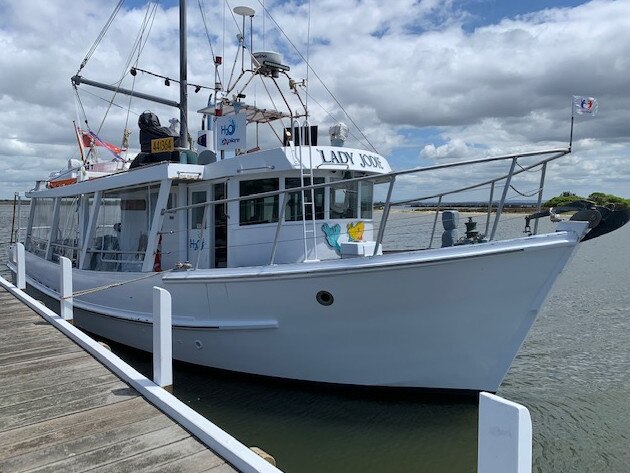
I get a closer look at the lakes’ birdlife with H2O Tours and Adventures, a new Paynesville-based father-and-daughter boat operation. Born out of their school-camp charter business, which was scuttled by Covid, H2O offers scheduled tours, water-taxi services and private charters – plus the chance to take the Lady Jodie’s helm if you fancy.
Still buzzing after guiding this former fishing boat for a while, I step on to a jetty that’s the sole gateway to Ocean Grange Homestead. On a pocket of private land within The Lakes National Park, with ocean beach on one side and lakes and islands on the other, this self-contained property started as a farmhouse in 1889. In the 1980s it became home to the Byrne family, and made the cover of Vogue Living after a stylish beach-house makeover, including the addition of a lookout tower.
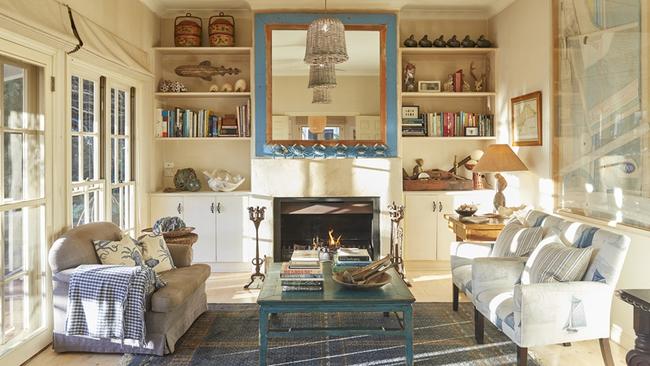
It now operates as accommodation for up to 22 guests hosted by David Byrne, who ran up and down the tower’s precipitous stairs as a boy. He and his wife took advantage of lockdowns by giving the property a major overhaul, installing solar power and updating the decor, which is Hamptons-style with a casual, relaxing feel. There’s a definite but not overwhelming maritime theme, with artful touches such as framed graphic-design collages created from old sails by Byrne’s mother.
This is an idyllic getaway, whether you prefer reading by the fire, floating in the pool and snoozing on deckchairs, or walking and boating. Taking the homestead’s sea kayaks or canoes out needn’t be an athletic endeavour. My early start on a sunny morning, drifting more than paddling across the still lake, is rewarded by close encounters with scores of black swans and their cygnets, terns sweeping by en masse, and groups of male pelicans. They grunt, jostle and ripple their throat pouches, bright pink for the mating season.
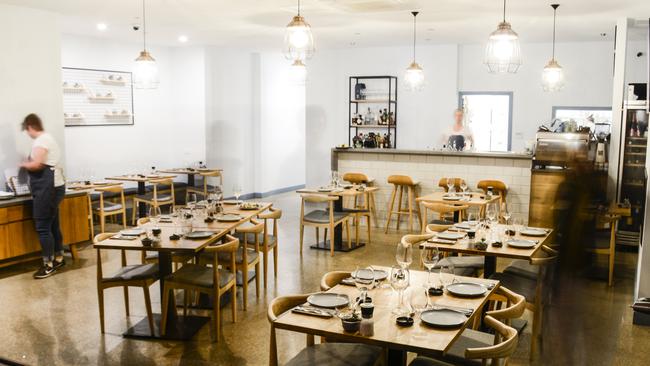
Back in Paynesville, Sardine Dining already has a baby. After kickstarting the region’s emerging reputation for great food in 2017, this restaurant has defied East Gippsland’s bad luck by not only staying in business but opening the sleek Sardine Cantina wine bar in October. Predominantly European cheese and charcuterie are served on a long black-stone bar, alongside wines spanning the globe, from France to Argentina and Gippsland. Can’t decide between these two eateries? Why not do both. Wine bar first, then the restaurant. Some decisions in East Gippsland are easy.
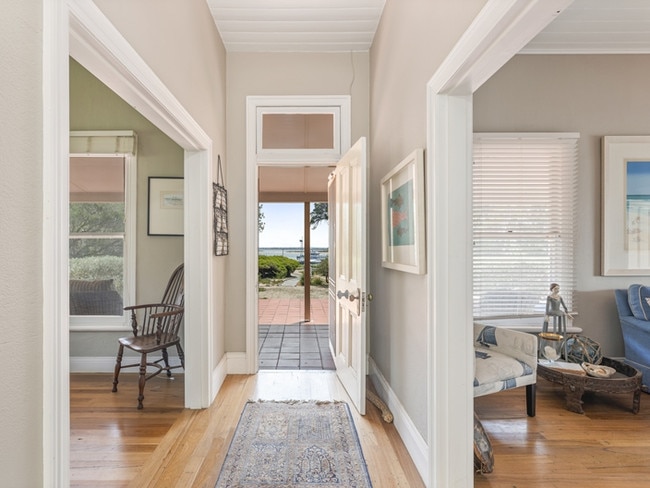
In the know
A map and list of participating artists and galleries on the Phoenix Trail is on the group’s Facebook page. A brochure on the trail is available only in the region.
facebook.com/groups/thephoenixtrail
Ocean Grange Homestead’s off-peak summer rate is $1490 a night for 10 people, plus $140 for each additional guest. BYO supplies or engage the services of talented local private chef Michelle Boyle.
Patricia Maunder was a guest of Destination Gippsland.

To join the conversation, please log in. Don't have an account? Register
Join the conversation, you are commenting as Logout